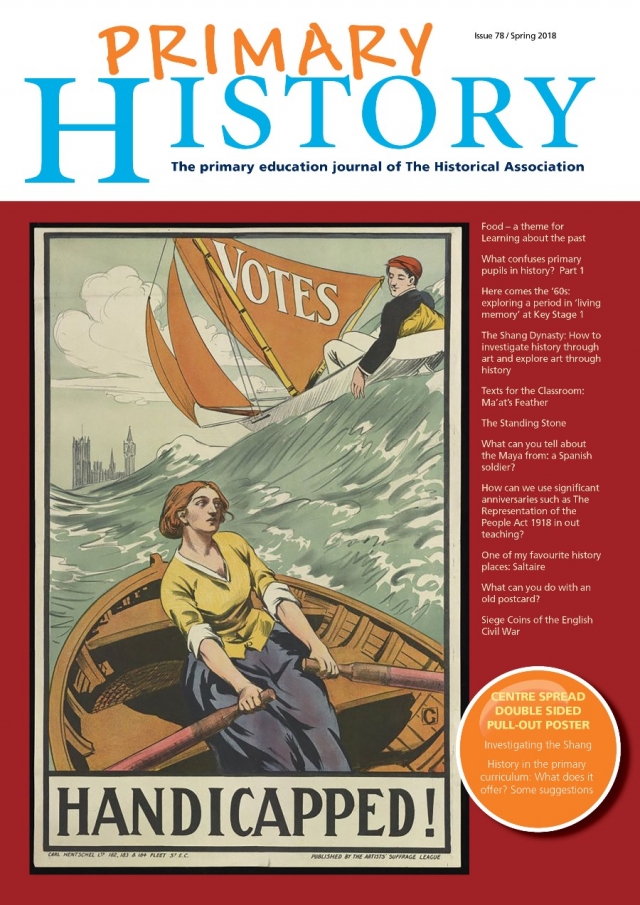Primary History 78: Out now

Many years ago a teacher recounted to me a lesson they had taught ostensibly about the Peasant’s Revolt of 1381.* The ‘extension’ task was to make a drawing that would reflect what had been learnt. One child had a less than tenuous grasp of what had been taught and not only confused ‘peasants’ with ‘pheasants’ but was unclear about what the latter looked like and drew what resembled a turkey! It was not the teacher’s finest lesson on a number of levels.
This is an extreme case but even when both teachers and children are fully engaged can we be certain that misunderstandings do not take place? Dealing with distortions and misunderstandings is also an important skill in the history lesson and beyond. These considerations are explored in what is the first of two important articles that consider ‘What confuses primary pupils in history?’ Tim Lomas provides strategies to deal with a wide range of issues that can inhibit effective learning about the past. His current article deals with confusions which arise where children have insufficient knowledge to understand a topic or have a misunderstanding related to chronology or anachronism. Three further areas of potential confusion will be dealt with in Issue 79.
How can we engage the child who does not distinguish his peasants from his turkey? The strategies that are used to deal with misconceptions make use of rich visual images and activities. In this edition we have a range of articles which set out to approach topics from a different perspective building on foundations provided in publications immediately after the introduction of National Curriculum 2014. For example, a sailor’s perspective is used to provide a focus for exploring the Maya. When I am asked about the joys of being involved in history teaching, one of the first thoughts that comes to my mind is the way that it is an umbrella subject which gives us the opportunity to delve into other areas. Alice Kirk’s article ‘The Shang Dynasty: how to investigate history through art and explore art through history’ provides depth of subject knowledge coupled with defined ways in which art and history can effectively enhance each other. Links with drama are used to support enquiry-based approaches outside the classroom when exploring the Standing Stones at Llech Idris in Snowdonia. We include a series of historical anniversaries, of which the end of War World I and Votes for Women are perhaps the best known, as well as some recent news reports, such as the discovery of a female Viking warrior, to provide stimulating starting points for topics and/or assemblies.
Championing new ideas calls for leadership qualities – some of these are indicated in the poster for this edition – and we hope to build on this in future publications by exploring what is involved in effectively leading history.
Have you ideas and experiences in teaching history in or out of the classroom or during assemblies or a favourite place which provides a stimulus for your teaching, which you would share in future edition of Primary History? If so please write to us.
Paul Bracey is a Senior Lecturer in Education at the University of Northampton. He is a member of the HA Primary Committee and Secretary for Midlands History Forum.
*Note: This rather alarming (if, hopefully, amusing) story took place over 25 years ago! However, the confusion between peasants and pheasants was drawn attention to much earlier in a book called 1066 and All That, a parody of school history teaching in the 1930s written by W.C. Sellar and R.J. Yeatman.

